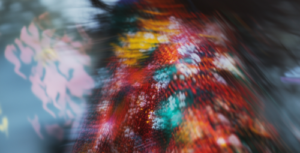11/12/2023
There is no hiding from the fact that artificial intelligence (AI) has well and truly burst onto the scene. Although research into AI has been going on for decades, it is only within the last few years that we have witnessed an explosion of AI applications with profound implications.
Whenever a new technology domain looks to become commercially viable, a surge of patent applications is usually filed. AI is no different with huge year-on-year growth in patent applications filed that mention AI.[1]
A recent Judgment, Emotional Perception AI Ltd v Comptroller-General of Patents, Designs and Trade Marks [2023] EWHC 2948, in relation to an appeal against decision BL O/542/22 of the United Kingdom Intellectual Property Office (UKIPO) has paved the way for the UKIPO to adjust their approach to dealing with patent applications that relate to certain AI-based inventions. Although the Judgment does not hint at a reduction in terms of how strictly the inventive step requirement is applied for AI-based inventions in the UK, the Judgment reinforces the position that claims involving artificial neural networks (ANNs) should be considered allowable if the contribution made by the invention is considered to be both technical and inventive.
The UKIPO has reacted very quickly to the Judgment and has confirmed a change in their approach by issuing a practice note here stating that:
“Following the judgment, the office is making an immediate change to practice for the examination of ANNs for excluded subject matter. Patent Examiners should not object to inventions involving an ANN under the “program for a computer” exclusion of section 1(2)(c)”.
Background Information and Discussion
Each patent office has its own unique approach to determining whether to award a patent for computer implemented inventions (CIIs) such as those that relate to AI. Taking the European Patent Office (EPO) and UKIPO as examples, they are known to be relatively strict when examining patent applications for CIIs. However, both the EPO and UKIPO will grant patents for CIIs, including in the field of AI, if the relevant requirements are met.
Under both UK and European law, computer programs are excluded from patentability. However, case law has developed in both jurisdictions to emphasise that it is possible to obtain a patent for CIIs even if the claim language refers to a computer program. The EPO adopts a relatively simple to understand test by stating that the exclusion does not apply to computer programs having a technical character. In contrast, the UKIPO must follow a more complicated test, known as the Aerotel/Macrossan test with reference to what are known as the AT&T signposts.
Although there are similarities between UK and European law, the UKIPO approach to the patentability of computer programs can tend to focus on questions of substance, essentially ‘what is the computer’ and ‘where is the computer program’? Indeed, these specific questions were highlighted as being of fundamental importance by the recent Judgment. In contrast, the EPO approach focusses less on the nature of the computer/computer program itself and more on questions about the ‘technical contribution’ and whether the technical contribution is inventive?
The Judgment highlighted the UKIPO’s position that the ‘computer program’ exclusion does not apply to patent claims that specifically refer to dedicated AI hardware (in particular, where the AI is a neural network), since this is not an ‘excluded’ computer program within the meaning of the UK law. Thus, providing the other requirements such as inventive step are met, a claim directed to dedicated AI hardware is potentially patentable in the UK.
Although there is significant interest in dedicated AI hardware, from a commercial point of view, a patent should also cover other potential implementations such as an AI implemented by a generic processor. However, an additional hurdle may exist for applicants trying to patent AI that could be executed by a generic processor.
Helpfully, the Judgment includes extensive discussion on this issue.
A computer program can be defined as a set of instructions that can be executed by a computer to perform a task. In the case of an AI, in particular a neural network, it is arguable whether the AI is indeed a ‘computer program’ within this narrow definition. Instead, when an artificial neural network (ANN) is trained, this training process generates a set of weights to be applied by the nodes of the ANN such that the operation of the trained ANN is consistent with its training.
According to the Judgment, an emulated ANN (i.e., where the trained ANN is executed by a generic processor) is also not considered to be an excluded program for a computer, and hence is not excluded from patentability in the UK. As a result, it is now easier for applicants to overcome objections of this nature at the UKIPO, particularly in the case of CIIs that refer to trained ANNs.
Conclusion
From the point of view of innovators interested in filing patent applications that relate to AI, the Judgment does at least remove one of the hurdles to obtaining a granted patent in the UK. In particular, the ‘computer program’ exclusion is clarified as not applying to an emulated ANN (i.e., where the functionality of an ANN is enabled by a generic processor).
This is commercially useful because applicants in this field now have support for seeking UK patent protection for ANNs that are implemented in a broader range of commercial circumstances (i.e., in addition to dedicated AI hardware for running an ANN, emulated ANNs are also allowable in principle). Perhaps some AI innovators interested in the UK market instead of the wider European market may now be minded to consider filing a patent application in the UK instead of Europe in view of the significantly lower official fees associated with filing in the UK. However, careful consideration must be given to the nature of the technology and the commercial circumstances before committing to such a filing strategy.
This article is for general information only. Its content is not a statement of the law on any subject and does not constitute advice. Please contact Reddie & Grose LLP for advice before taking any action in reliance on it.
Footnotes
[1] According to publicly accessible data held by the World Intellectual Property Organization, there has been consistent and substantial year-on-year growth in the number of international patent applications including a reference to ‘artificial intelligence’ or ‘machine learning’ in the description that have been filed each year since 2010.



